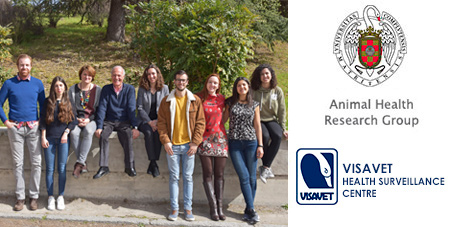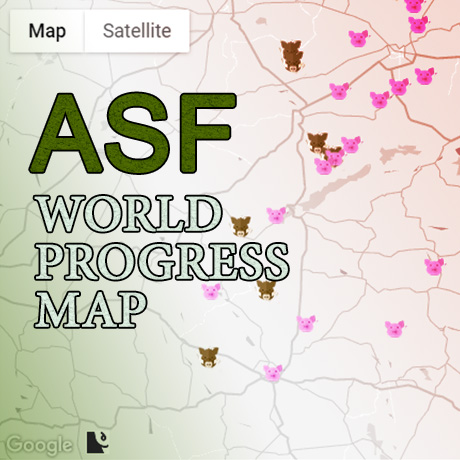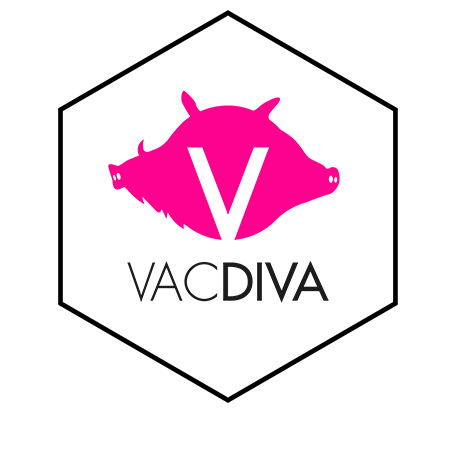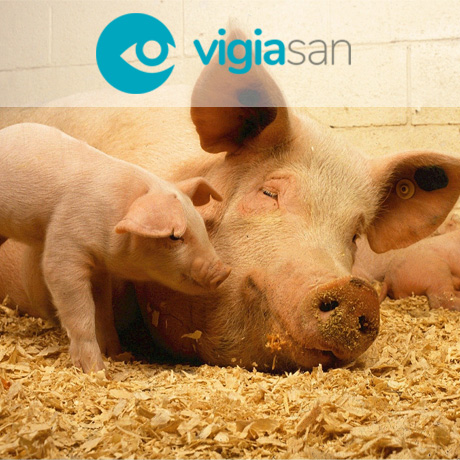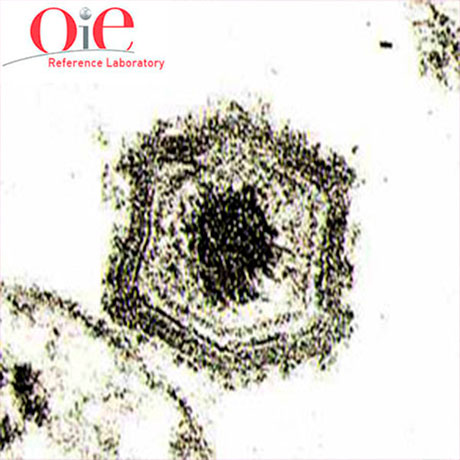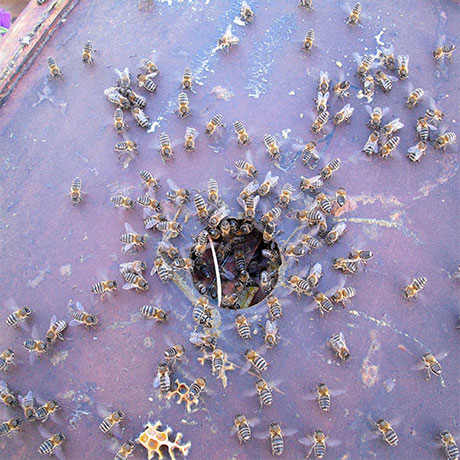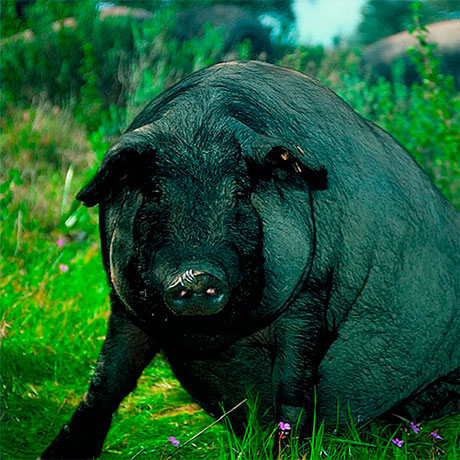Bluetongue situation (December)
The Ministerio de Agricultura, Alimentación y Medio Ambiente has published the "Informe de Situación de Lengua Azul (Diciembre 2012) (Status Bluetongue Report: December 2012)". This document communicates the epidemiological status of Bluetongue in Spain in December 2012. This date coincides with the month in which Spain is almost entirely vector free period (Overview seasonally vector free periods).
Report explains the evolution of the disease and vaccination programs. It also discussed in-depth the evolution of Bluetongue in Spain during the vector activity period 2011-2012 and the beginning of the 2012-2013 period, as well as the current health situation of neighboring countries. In conclusion the report highlights the favorable epidemiological evolution of the disease in recent years, remarking the importance of appropriate vaccination programs.
Eradication of African Swine Fever in Sardinia
 Professor José Manuel Sánchez-Vizcaíno participated in the Eradication of African Swine Fever in Sardinia meeting, last December 1st to discuss the technical aspects and strategy to eradicate the ASF in Sardinia. TGR Italian public television news shows in this video (minute 5:28). e
Professor José Manuel Sánchez-Vizcaíno participated in the Eradication of African Swine Fever in Sardinia meeting, last December 1st to discuss the technical aspects and strategy to eradicate the ASF in Sardinia. TGR Italian public television news shows in this video (minute 5:28). e
Detection of serotype 14 of bluetongue virus in Baltic states and Poland
Almudena Sánchez Matamoros & José Manuel Sánchez-Vizcaíno
November 27th, 2012. SUAT-UCM
In November 2012, Estonia, Latvia, Lithuania and Poland have informed at the European Commission of the detection of animals positive for bluetongue virus. In addition, Poland has made the virus sequencing obtaining results highly compatible with the serotype 14 of bluetongue virus. Thus, every country has implemented the immobilization of positive farms and epidemiological study (MAGRAMA, 2012).
Furthermore, Russian government reported the detection bluetongue serotype 14 in Belarus and Russia to animals imported from Europe (PROMED, 2012). Note that the last outbreak of bluetongue serotype 14 in Russia was reported in March 2012.
The trade of the Spanish livestock sector influenced by this disease is characterized by historically imported large numbers of live bovine animals, sheep and goats from Poland and Lithuania (Agencia tributaria, DATACOMEX, 2012). Hence, an increase of the control measure at border crossings is essential to prevent the entry of a new serotype of the bluetongue in Spain.
In response, the Ministerio de Agricultura, Alimentación y Medio Ambiente (MAGRAMA) reported to the Veterinary Services of the Autonomous Communities that increase the surveillance in animals susceptible to bluetongue from the Baltic States (Estonia, Latvia and Lithuania) and Poland.
Links:
RASVE-MAPAMA
ProMed-mail
10th Anniversary SUAT-UCM (2002-2012)
El próximo día 23 de Noviembre se cumplirán 10 años del nacimiento del grupo SUAT en el Centro VISAVET de la Universidad Complutense.
Durante estos 10 años han sido muchas las personas que han colaborado con nosotros y deseamos expresaros nuestro agradecimiento mas sincero. Empezando por las distintos miembros de SUAT que habéis trabajado a lo largo de estos años en el grupo, los alumnos internos, los colaboradores externos nacionales e internacionales, las instituciones y las empresas colaboradoras. A todos muchísimas gracias por vuestra ayuda y colaboración.
En estos años se han llevado a cabo 13 Proyectos Europeos, 15 Nacionales, Se han publicado 66 Trabajos científicos SCI, 16 Libros, 12 Tesis Doctorales (dos de ellas con premio extraordinario), 10 Diplomas de Estudios Avanzados, 7 Trabajos de Máster, se han realizado varios cursos nacionales e internacionales así como se han diseñado 6 Programas educativos informáticos on line.
Todo esto lo podéis ver en nuestra web y esperamos que cuando la situación económica mejore podamos celebrarlo todos juntos.
De momento Feliz Cumpleaños a todos y muchísimas gracias por vuestra ayuda y colaboración.
Grupo SUAT
Foot and mouth disease simulation exercise in Castilla La Mancha, Spain
During 19 and 20 November 2012 a foot and mouth disease (FMD) simulation exercise in real time has been organized in the region of Castilla La Mancha with the colaboration between , the Ministry of Agriculture, Food and Environment (MAGRAMA), the Autonomous Community of Castilla-La Mancha and our group SUAT-VISAVET.
In that exercise, clinical symptoms compatible with the disease have been reproduced in a private cattle breeding farm located in the town of Talavera de la Reina (Toledo. The activities of different services involved have been monitoring, from the private veterinarians, veterinary services from MAGRAMA, sample taking and sending to National Reference Laboratory (LCV Algete) and the communication of suspicion.
This simulation exercise had been previously reported to the World Organization for Animal Health (OIE) and the European Commission.

This field simulation exercise, aims mainly at reviewing and verifying the National and Autonomous emergency plans, the control measures and the eradication of a FMD outbreak in Spain with a view to identifying improvements to be made in the plans, instructions, structures and procedures.
The specific objectives of this simulation exercise are the following:
- Evaluate the coordination between the MAGRAMA and the Autonomous Communities (CCAA) when facing a notification of an FMD outbreak in Spain;
- Evaluate the existence and/or the efficiency of the MAGRAMA and CCAA contingency plans for FMD;
- Evaluate the veterinary services capacity of the CCAA to identify the farms susceptible to be affected by an FMD outbreak;
- Evaluate the veterinary services actions of the CCAA in case they need to send potentially FMD infected samples to a laboratory;
- Evaluate the response of the National reference laboratory in case of reception of the FMD samples.
Yesterday afternoon (20th of November) the field simulation ended with a press conference where the Deputy Director General of Primary Production Sanitary Safety, Ministry of Agriculture, Food and Environment (MAGRAMA), the Director General of Agriculture and Livestock of Castilla-La Mancha and Prof. Jose Manuel Sanchez-Vizcaino, explained the key points of the exercise.
The new in the media: OIE / MAGRAMA / Castilla-La Mancha / Europapress / 20minutos / Qué / La Tribuna de Toledo / Terra / teinteresa.es / Agro información / La cerca / Radio Surco / Ferias y mercados
New restriction map of Bluetongue in Europe
Almudena Sánchez Matamoros & José Manuel Sánchez-Vizcaíno
November 16th, 2012. SUAT-UCM
European Commission has carried out the modification of the restriction zones for Bluetongue serotypes in Europe. The changes in the new distribution of Bluetongue affect to Spain. See “Most of Spain declared free of serotype 8 of Bluetongue”

Fig.: Restriction areas for different serotypes of Bluetongue in Europe as of November, 2012
Source: European Commission



